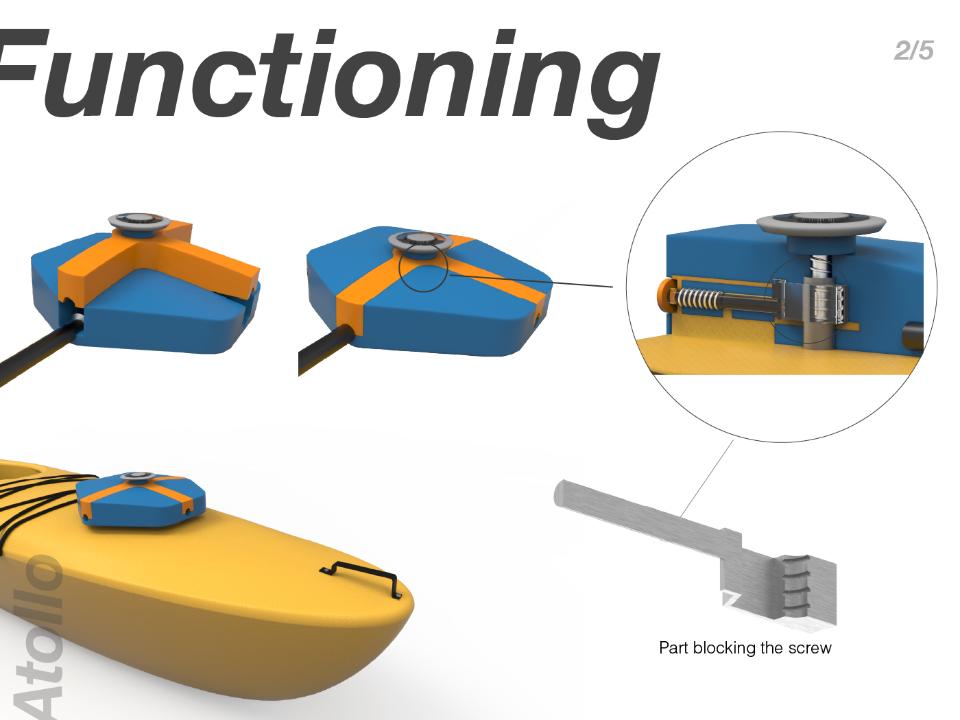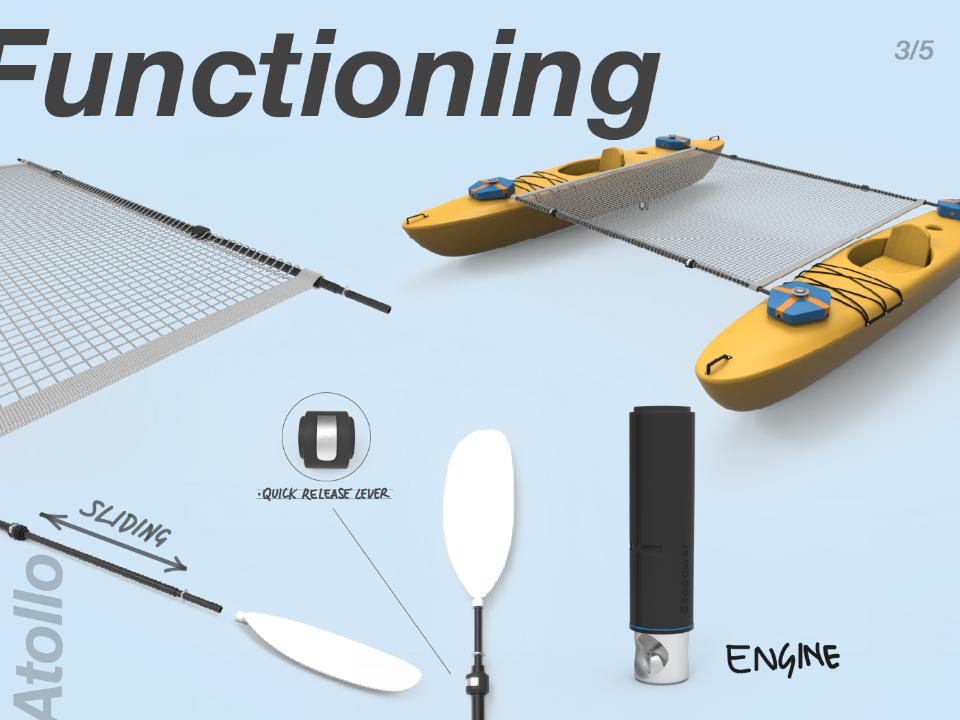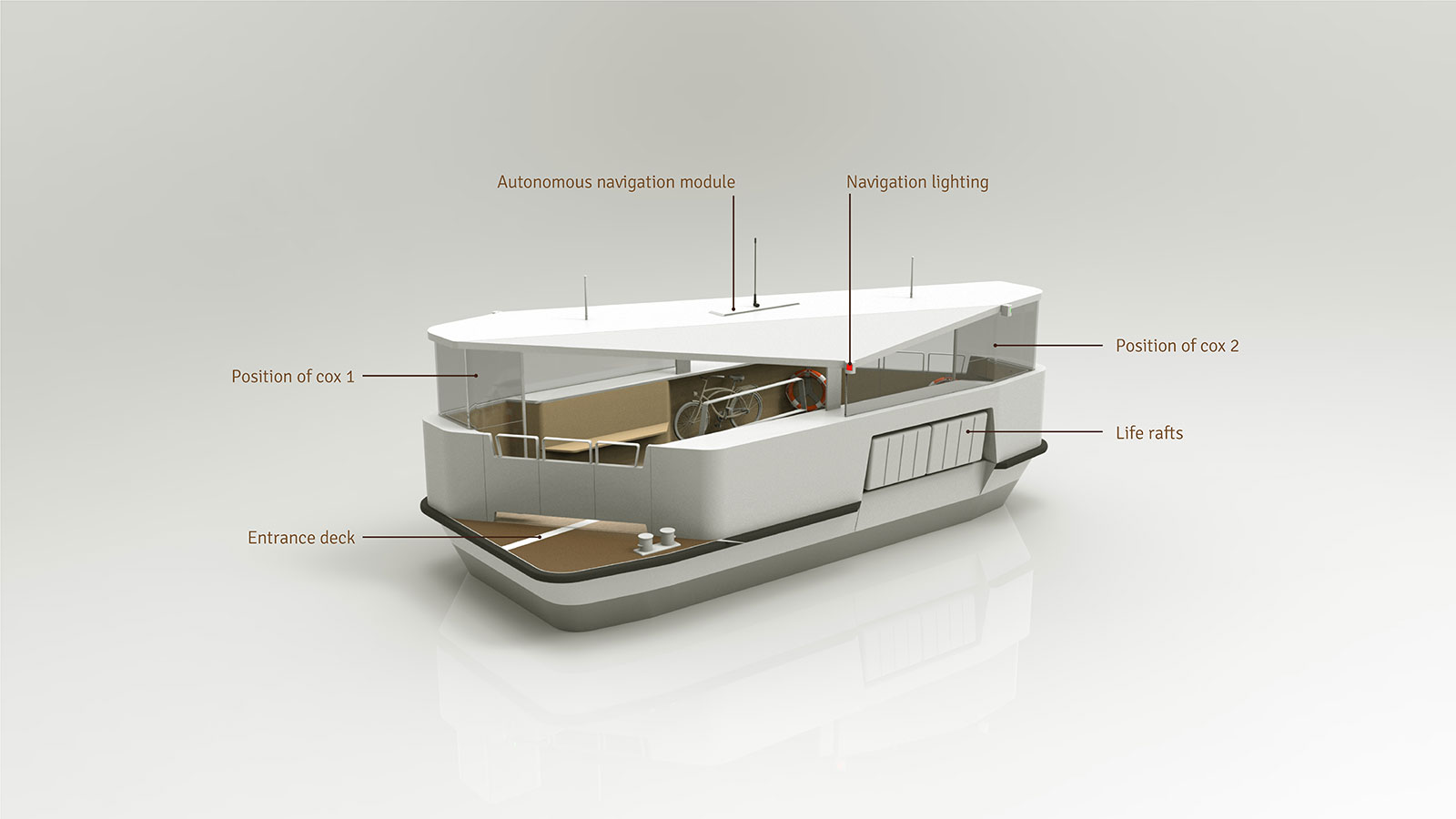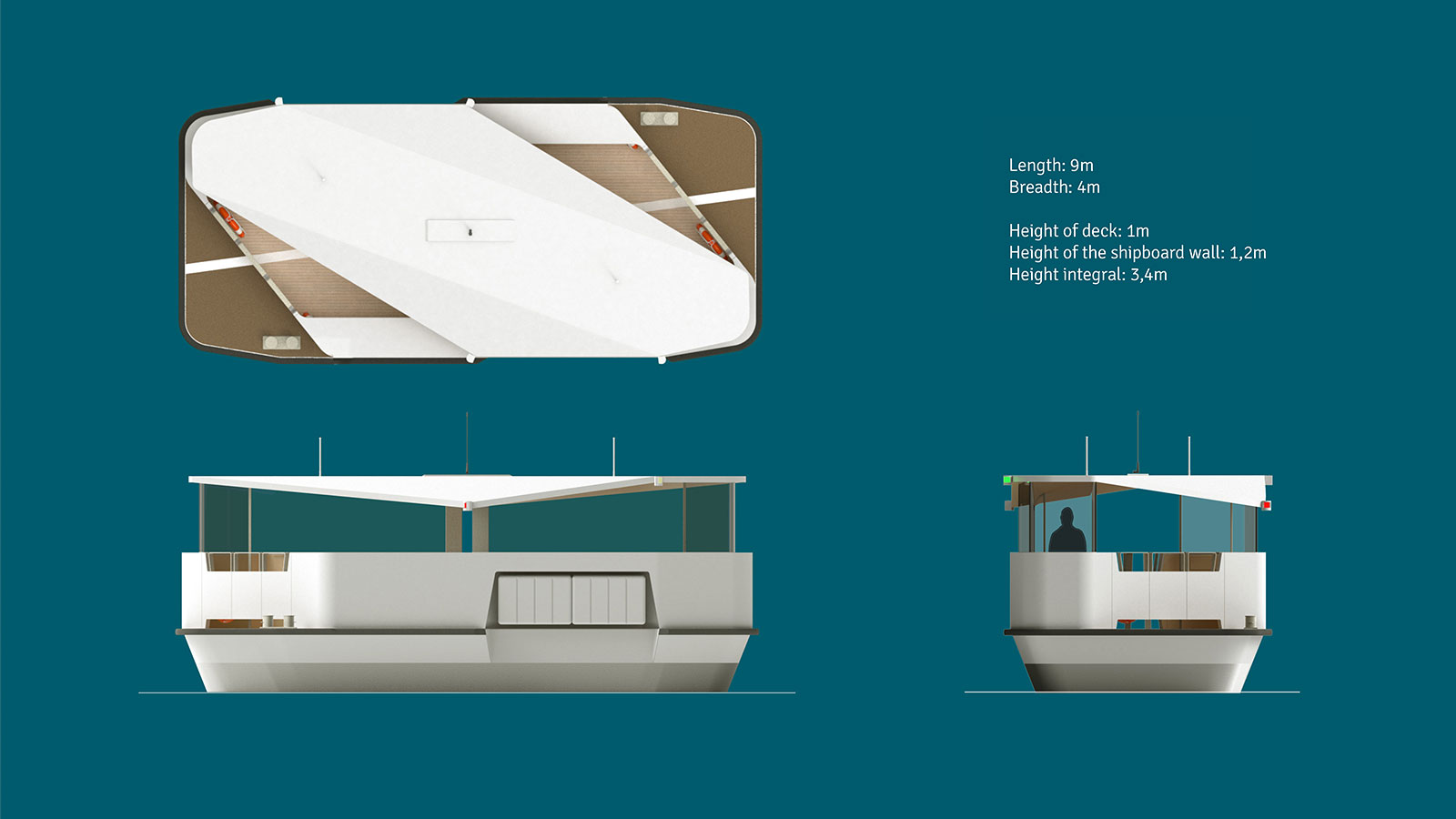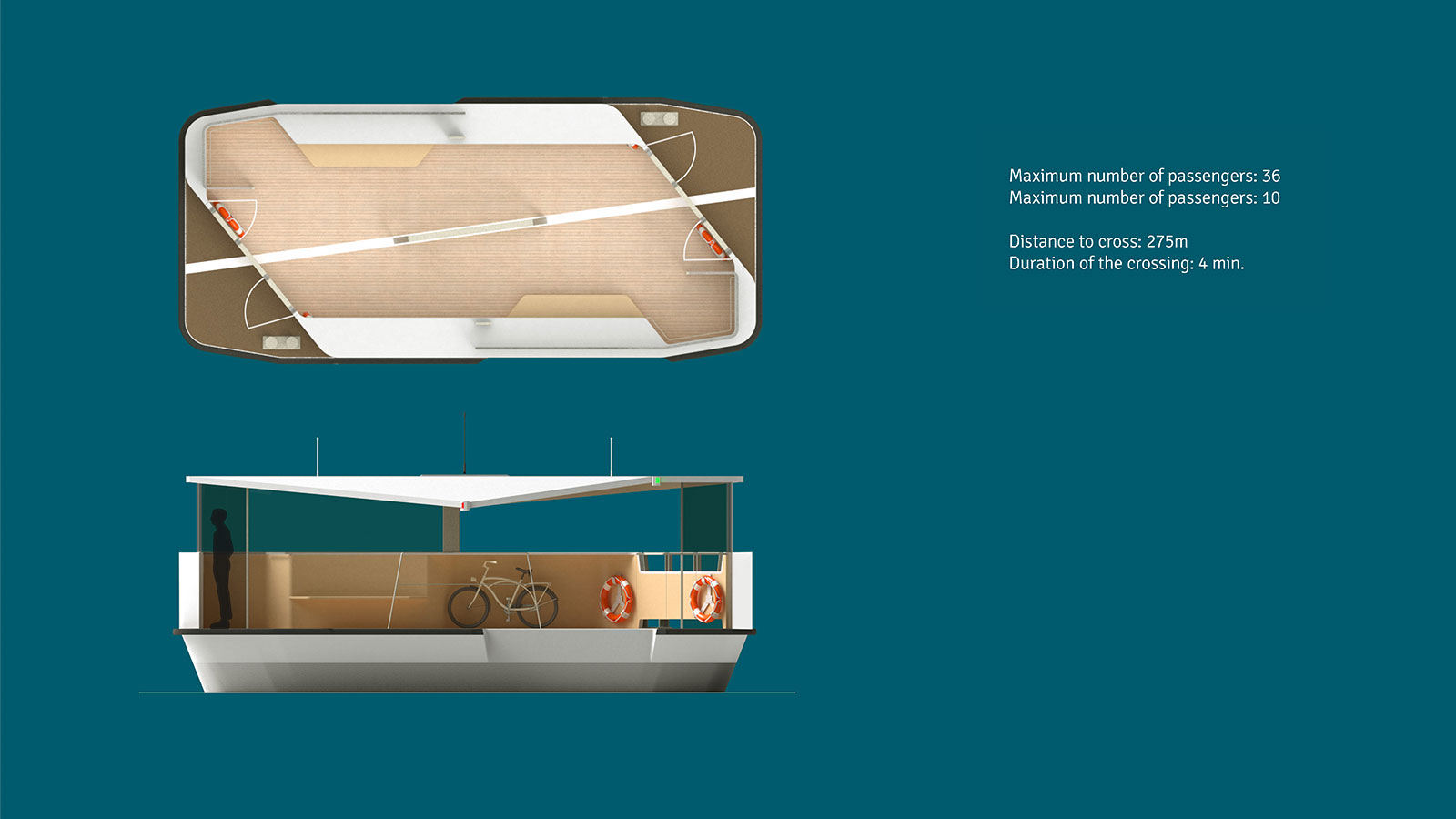first place
Tritonus
Ksenia Gutkovskaya
Stroganov Moscow State University of Arts and Industry – Russia
Muscle-poweredtrimaran.Functional features of individual water transport for recreationalrecreation:robustconstruction,highbuoyancy and safety,seat, mainlypedal drive(“freedrive” system), hybridconverter.Itprovides for the possibility of placing solar panels, compartments for luggage and equipment. The transparency of the structureissuitable for the study of underwater fauna -this feature allows you to collect complete data on itsbehavior in the naturalenviromentwithoutdiving.
The principle of operationis like a water bike, itresembles a transparent boat or kayak. Is a trimaran.This concept wasdevelopedas an idea for activerecreation of a personwithout the need to immerse a person in water – he has the opportunity to observeunderwater fauna, conductresearch and simplyenjoy the beauty of the underwater world.Additional solar panels can be placed on the floats. The generator convertsmusculartraction and stores energy from solar panels in the battery to transfer it to the screw.
I hope that this concept willfind a response in the hearts of people, becausetransportisaimedataffordablerecreation, as well as full environmentalfriendliness
second place
Atollo
Ludovico Celli
Politecnico di Milano– Italy / Italia
How many times have we been to the seaside enjoying a beautiful coast, entering in the water and saw a weird foam ruining it? How many times the peace of a swim has been ruined by the sound of roaring engines nearby and the fear of being hit? In this project I decided to think about an alternative way to enjoy the sea, still cruising, being able to relax looking at the coast from the water and moving from a cove to another.Atollo is a new way to live the water, sustainable, healthy and fun.
Atollo is a new way to live the water. It’s a cruising kayak, equipped with features that allows small and medium groups of people to enjoy the sea, a lake, the ocean, respecting them, being sustainable and not polluting as a gas boat. Atollo comes with an electric engine incorporeted in the design that can be used or not, according to the users' needs at the moment. The engine gives a great help for longer navigations, coming in when the user is tired or needs an extra boost.
The other main feature of the product is the possibility to connect two, and potentialli infinite kayaks together, creating a little floating system, from here the name Atollo. The connection between the two kayaks is achieved thanks to the paddle and the two blue and orange part at the extremities of the kayak.Taking off the extremity of the paddle (the convex part that goes in the water) and extending the pole, this becomes long enough to reach 2 meters: at this point, after passing the net across the pole as shown in slides n°3, the pole is secured in the blue and orange box, as shown in slides n°2, after this, throwing a simple foldable anchor that can be found in every online market, the users are ready to enjoy the water, being suspended between the two kayaks.
third place
Semi-autonomouspedestrian-bycycle ferry
Natalia Wojewnik
Academy of Fine Arts in Gdańsk – Poland / Polonia
I propose a semi-autonomous ferry as a solution for the local community whoisnotyet ready for a transportationwithout a physical driver. Ferry can be easilytransformedinto full autonomous one. The formrejects the traditionaldivision of shiparchitecture (no traditionalpilothouse) and isfollowed by double ruddercox’s station whichisdesigned and dedicated for semi-autonomousnavigation. Due to symmetry, getting on and off is very smooth and thereis no need for the turningmaneuver.
This project is a response to the protests of non-motorizedresidents of Gdańskwho, after the closure of the ferry crossing “Wisłoujście” in 2016, have no comfortable way to get from the New Port to the “Wisłoujście” Fortress on the other side of the river. A car-only tunnel wasbuilt under the MartwaWisłariver, so with the closure of the water crossing, the distance for pedestrians and cyclistsincreased from 245m to almost 17km.
I propose a semi-autonomousunitas a solutionbecause the local community isnotyet ready for a transportationwithout a physical driver. In the near future, the design could be easilyconverted to fullyautonomous and the cox’sspacewill be available to passengersas a view point.
From preliminary design assumptions I can maintain a special feature – rejection of classicalnavalarchitecture. From maintechnologicalspecification, the autonomyhasleftitsmark the most in shaping the ferry. Itforced to design an alternative for traditional steering runner, which led to furtherconsequences in design decisions. The ferry is double-ended, asis the cox’s station, whichgoes to the appropriate side, depending on which way the courseisgoing. This relationshipcreates the “invertedsymmetry” on which I based the geometry of the entireunit. The rakes and the resultingtrapezoidalshapes are clear throughout the whole project. Thanks to the use of symmetry and double rudder, getting on and off is very smooth, and the helmsmandoesnot have to spend time performing a turningmaneuver. The lines building the body come out of the cox’s station (whichis best represented by the top view), dividing the ferry into successive spaces and starting the interior-exterior game. Entering the ferry, we are supposedlyalready on board, but still outside the railing, then we still need a few more steps to becometruly “inside”, under the roof. This spacesintermingleeachother, whichishighlighted by contrasting finishes, creating a peculiarimpression of an open solid.
The form, whichrejects the traditionaldivision of shiparchitecture (no traditionalpilothouse), fitsinto the trend of designingautonomousunits. Moreover, thanks to itsform, the ferry gains a completelydifferent visual perception, depending on the perspective of the viewer.
I project the shuttle for a small number of people – a maximum of 36 or less, who can then comfortably bring in 10 bikes. Space for single-track vehicleshasbeenprovided under the windowsill, ensuringtheirstabilityduring the crossing and leaving free space in the traffic flow, and additionally with the backrest in the middle of the ferry.




